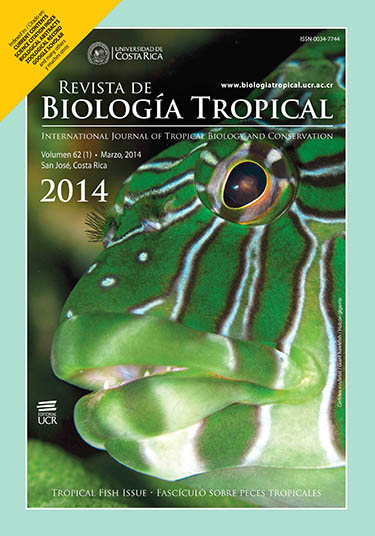Abstract
The effect of environmental variation on the structure of tree communities in tropical forests is still under debate. There is evidence that in landscapes like Tierra Firme forest, where the environmental gradient decreases at a local level, the effect of soil on the distribution patterns of plant species is minimal, happens to be random or is due to biological processes. In contrast, in studies with different kinds of plants from tropical forests, a greater effect on floristic composition of varying soil and topography has been reported. To assess this, the current study was carried out in a permanent plot of ten hectares in the Amacayacu National Park, Colombian Amazonia. To run the analysis, floristic and environmental variations were obtained according to tree species abundance categories and growth forms. In order to quantify the role played by both environmental filtering and dispersal limitation, the variation of the spatial configuration was included. We used Detrended Correspondence Analysis and Canonical Correspondence Analysis, followed by a variation partitioning, to analyze the species distribution patterns. The spatial template was evaluated using the Principal Coordinates of Neighbor Matrix method. We recorded 14 074 individuals from 1 053 species and 80 families. The most abundant families were Myristicaceae, Moraceae, Meliaceae, Arecaceae and Lecythidaceae, coinciding with other studies from Northwest Amazonia. Beta diversity was relatively low within the plot. Soils were very poor, had high aluminum concentration and were predominantly clayey. The floristic differences explained along the ten hectares plot were mainly associated to biological processes, such as dispersal limitation. The largest proportion of community variation in our dataset was unexplained by either environmental or spatial data. In conclusion, these results support random processes as the major drivers of the spatial variation of tree species at a local scale on Tierra Firme forests of Amacayacu National Park, and suggest reserve´s size as a key element to ensure the conservation of plant diversity at both regional and local levels.##plugins.facebook.comentarios##
Downloads
Download data is not yet available.






